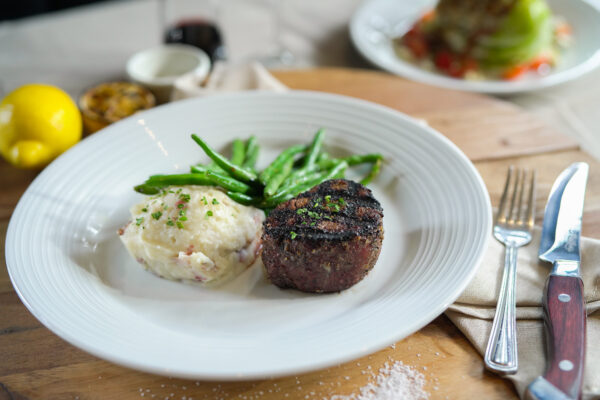What Happens As A Steak Cooks
Steak has arguably been one of the most delicious and decadent options on any menu for decades. The overall richness and diversity across all the different cuts, cooking styles, and flavor profiles, make steak the perfect canvas for any great meal. Although many varying factors combine together to make steaks the delicious meal that we know and love, one of the easiest ways to change the overall texture and flavor of a steak is to change the way it is cooked or to change the doneness of that steak. With so many ways to cook a steak, and many different doneness options, finding the flavors that are perfect for you can take time. Here at Stanford’s, we pride ourselves in having mastered the art of cooking a delicious steak. Make your next dining experience one to remember by making your reservation at Stanford’s today! Here are three things that change as a steak cooks and tips on how to find your perfect doneness.
Crust
The crust of a steak, or grill marks when cooked on a grill, are a huge source of flavor and texture. The crust is caused by something called the Maillard reaction, which is a chemical reaction that happens between amino acids and sugars when the two get over a certain temperature. This reaction is what makes the outside of bread brown and puts the crunch in your chocolate chip cookies. The more done your steak is, the more crust will form on the exterior of your steak. If you like a steak with a bit more chew to it, or like a more crisp exterior, you may want to consider a steak that is a bit more done. The preferred cooking temperature for steaks, medium-rare, will cook the steak enough for a good crust to build up without affecting the overall tenderness of the steak.
Texture
As mentioned earlier, the texture of a steak is drastically affected by how much a steak is cooked and the method it is cooked by. As a general rule, the more well done a steak is, the more tough that cut will be. This does not mean that you necessarily want to order your steak rare; as many people are put off by the more mineral taste of steaks cooked this way. The reality is that many people like a bit of chew to their steaks, which has led to medium-rare becoming the preferred cooking temperature for steaks.
Juiciness
As long as a steak has been properly rested after cooking for about 10 minutes, it should retain a good amount of juiciness. As with the overall texture, the more you cook a piece of meat, the more juices you will cook out. This will lead to a drier and a less flavorful steak overall. If you are looking for a way to get all the delicious flavor of a juicy steak without the moisture of traditional steak, dry-aged beef will have a very unique and distinct flavor. Depending on how long your steak was aged for, you will pick up more earthy tones, more tender meat, and extremely diverse flavor profiles. For steak lovers, dry-aged beef is almost completely unique from unaged steak.
If you would like to taste these differences for yourself with a steak expertly prepared by an industry-leading chef, come into Stanford’s today. Our expert staff will help you find the perfect steak and doneness level to fit your preferred flavors.

